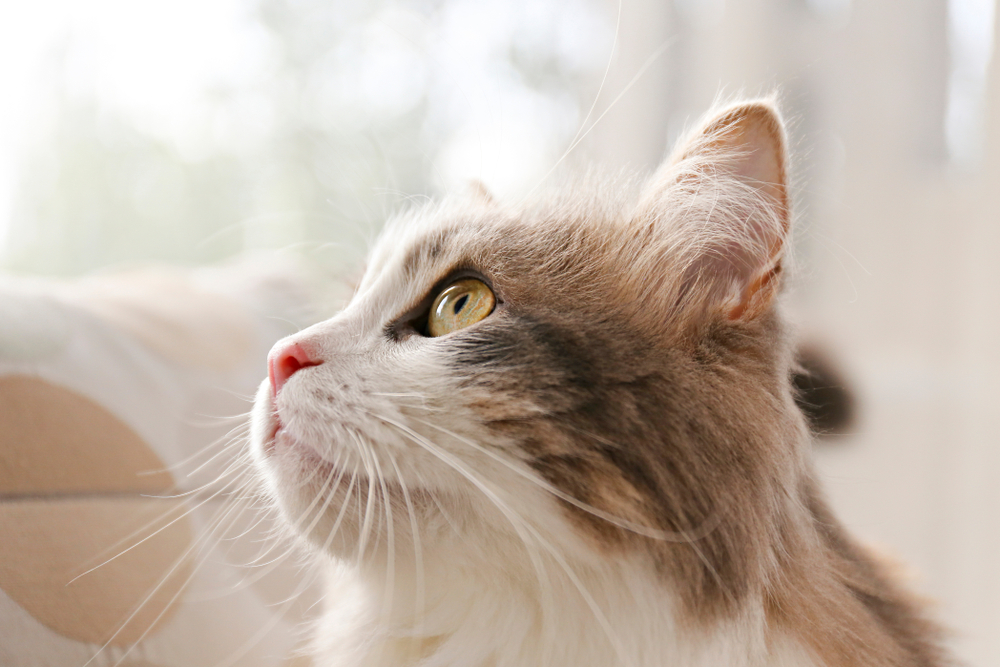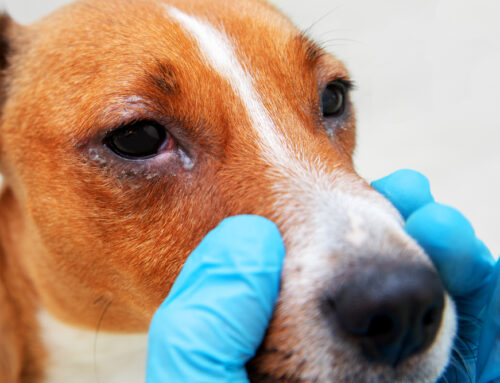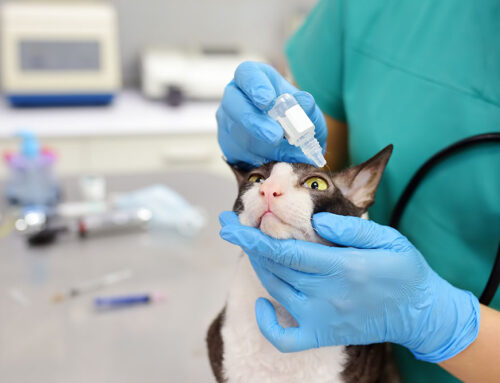In veterinary ophthalmology, we are often tasked with diagnosing pets who appear to have an eye problem, but when examined more closely, they actually have a neurologic, dermatologic, or oncologic problem that also affects the eyes. This is often the case with nystagmus, a rhythmic, jerking, back-and-forth, or circular eye movement usually caused by an underlying vestibular (i.e., balance) disturbance in the brain or inner ear.
To help pet owners better understand nystagmus and what it could mean for their pet, the Veterinary Vision Center team explains common causes, and when owners must seek veterinary or ophthalmologic care for their pet.
What is nystagmus in pets?
Nystagmus is the term used to describe abnormal, flickering eye movements in pets. While your pet’s eyes will normally move from side to side when your pet moves their head, in pets with nystagmus, these movements occur rhythmically while your pet’s head is still. Nystagmus has several different classifications based on the speed and direction of the movement, which can help veterinarians determine the underlying cause. Nystagmus types include:
- Jerk nystagmus —The eyes move slowly in one direction, and then jerk quickly back the other way.
- Pendulous nystagmus — The eyes move slowly back and forth at the same speed.
- Vertical nystagmus — The eyes move rhythmically up and down.
- Horizontal nystagmus — The eyes move rhythmically from side to side.
- Rotary nystagmus — The eyes rotate or move in a circle.
Vestibular pet nystagmus causes
The underlying nystagmus cause is usually a problem with the nerves that control your pet’s eye muscles. The brain and ear work together to control your pet’s balance, which is controlled by the vestibular system, and a vestibular problem is the most common reason for nystagmus. Other signs include unsteadiness, head tilt, and nausea.
Multiple underlying issues can lead to vestibular signs, including:
- Idiopathic or age-related issues, which commonly occur for unknown reasons in older dogs but resolves with supportive care
- Inner ear inflammation or infection
- Cholesteatoma (i.e., a type of inner ear obstruction)
- Brain tumor
- Brain inflammation (e.g., meningitis, vitamin deficiency, infection)
Congenital pet nystagmus causes
Some pets are born with nystagmus, because the visual processing brain areas did not form correctly. This is common in purebred Asian cat breeds, such as the Siamese, and has been found in a specific family line of Belgian shepherds. Most pets with congenital nystagmus can see, and have no balance problems, and the condition may resolve on its own or remain present and stable throughout their life. These pets should still receive an ophthalmic examination, because those born with one congenital abnormality may have others that could affect their vision or eye comfort in the future.
Pet nystagmus diagnosis
Finding a definitive cause for nystagmus in pets may require significant detective skills on your veterinarian’s part or a referral to a veterinary neurologist. A basic physical examination, plus an ophthalmologic examination, can help narrow down the possible causes and determine whether the condition is pathologic or harmless. If the nystagmus is congenital, no specific testing is required except for the basic eye tests.
For pets with a suspected underlying disease or condition, testing may include:
- Basic blood and urine tests
- Infectious disease testing
- Brain imaging (i.e., CT or MRI)
- Cerebrospinal fluid analysis
You and your veterinarian will decide together how to best proceed with the diagnostic process. Some pet owners opt to forgo advanced diagnostics and attempt treatment trials to see if their pet improves with time. If medical therapy is unsuccessful, you will likely be referred for a more advanced workup.
Pet nystagmus treatment
No specific treatments are required for nystagmus alone—the condition is unlikely to affect eye health or vision in pets born with the problem, and may or may not resolve on its own. Pets who have developed nystagmus from a vestibular problem should be treated for the underlying issue, which should quickly resolve the nystagmus and return the pet’s functional vision and balance to normal. Treatments will vary depending on the cause, and may include close outpatient monitoring, medical therapy, hospitalization, or surgery.
Nystagmus in a young or purebred pet may be a “normal” finding, or may indicate the presence of other eye or brain abnormalities. Schedule a visit with our Veterinary Vision Center team for a complete eye examination if your young pet has nystagmus, to ensure their eyes are otherwise healthy. If your pet suddenly develops nystagmus combined with a head tilt, nausea, or stumbling gait, contact your primary veterinarian or local emergency facility for prompt diagnosis and treatment.








Leave A Comment